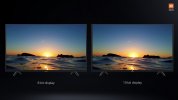You are using an out of date browser. It may not display this or other websites correctly.
You should upgrade or use an alternative browser.
You should upgrade or use an alternative browser.
Getting pixelation in sky when adding saturation in DaVinci Resolve 17
- Thread starter Yaros
- Start date
- Joined
- Feb 8, 2018
- Messages
- 8,536
- Reactions
- 13,799
- Age
- 56
That is what happens when you push the colors to hard and they start to break up. , you need to back off on the saturation as well as add some luminance to the sky , that will also help it smooth out.
Phantomrain.org
Gear to fly your Air 2 in the Rain. Land on the Water.
Phantomrain.org
Gear to fly your Air 2 in the Rain. Land on the Water.
Strange, this doesn't happen when I don't apply a LUT, but as soon as I do, the pixelation starts happening.
sancap
Well-Known Member
What drone/camera, what settings, what format, did you use a filter, answering these questions could help people properly diagnose the issue.
If you are working with an MP4 or .mov image there is only so much you can do to "fix" a video, whether it be changing colors, saturation, lightening....that's why people use log video and such. There is probably no solution other than to back off as the other poster mentioned.
I'm using:
Drone: Mavic Air 2
Format: MP4
Codec: H.265
Color Profile: D-Cinelike
Settings: Manual Exposure and White Balance
Software: DaVinci Resolve 17
LUTs: Included DJI Luts into Davinci Resolve
Drone: Mavic Air 2
Format: MP4
Codec: H.265
Color Profile: D-Cinelike
Settings: Manual Exposure and White Balance
Software: DaVinci Resolve 17
LUTs: Included DJI Luts into Davinci Resolve
So it's already compressed and you have already tweaked it with a LUT and now you are wanting to tweak it further. The colors have been pushed as far as they can go. You could try removing the LUT and color grading it by yourself since a LUT is nothing more than a color grading short cut.
With manual editing it doesn't cause so much noise, but I don't understand why is that. Why when I do it manually it doesn't cause any issues, but when I do it with a LUT it does cause issues?So it's already compressed and you have already tweaked it with a LUT and now you are wanting to tweak it further. The colors have been pushed as far as they can go. You could try removing the LUT and color grading it by yourself since a LUT is nothing more than a color grading short cut.
Another question: How to not compress the video?
The LUT may be doing more stretching and manipulation than you are doing manually. Certainly after the. LUT does its' work you have little left to be able to do without damage. As to how not to compress....you are working with H265 and it is compressed already even if it is DLog. Nothing you can do about that. Some folks go for the Cine version since it does ProRes, which isn't entirely RAW but is 10bit with a higher data rate so you can get away with more color correction. I would have bout a Cine if the SSD was removable but no way I'll touch a non-removable card. Now that you have H265 footage you can't "uncompress" it.
brett8883
Well-Known Member
It’s just noise. You can apply noise reduction if it bothers you.Hello, I have been trying to color grade some footage in DaVinci Resolve, and I get this weird issue where it would pixelate the sky when I increase the saturation, here is an example:
View attachment 144644
Does anyone know how to fix this?
I don’t think the compression is really to blame here it’s just a very high saturation on a very bright part of the image. Even on actual uncompressed raw from the Inspire 2 I can get noise in the sky if I push it a lot like this.
Dealing with noise is just a part of the film making process. I think the 5 phases of dealing with noise are: recognizing the noise exists, trying to fix the noise, avoiding causing the noise in the first place, accepting that noise is ok and not letting it bother you, calling it grain and adding more of it to videos on purpose.
Last edited:
You need to take a step back and consider RGB in general. With 24 bit color, each color only has 256 available shades. The eye can see 256 individual shades pretty easily. Pastelish tones like sky are one of the easy to see cases, all the same color but different shades, will look graduated (or pixelated, depending on vocabulary).
A 10bit color depth, as some cameras have, will allow more editing room and allow for better gradients due to each color having 1024 shades.

A 10bit color depth, as some cameras have, will allow more editing room and allow for better gradients due to each color having 1024 shades.

Does the Mavic Air 2 have any way to record uncompressed video?you are working with H265 and it is compressed already even if it is DLog. Nothing you can do about that.
Dave Maine
Well-Known Member
- Joined
- Jan 27, 2018
- Messages
- 1,546
- Reactions
- 1,123
- Age
- 82
Does the Mavic Air 2 have any way to record uncompressed video?
Not really. While we also need to keep the term compression in context - RAW generally means more data and larger files.
Going way simple here... HEVC 264 and 265 are compression standards that treat video in blocks. They determine if those blocks can be simplified without causing too many visual artifacts. H.265 is better - more efficient - at simplification. Simplifying the blocks reduces data size. The simplification is not lossless, and can cause artifacts.
RAW recording means the video (or image) is stored without any video simplification (compression).
Then comes a different compression. The file or storage format may be compressed. PNG, for example, compresses a file in a lossless way. Strings of data that repeat can be encoded to take less space, yet be reconstructed without losing any bit; whereas JPG format accepts some loss of data to save additional storage space.
RAW video is usually compressed for storage using a lossless method.
brett8883
Well-Known Member
FlyingFilmmaker
Well-Known Member
This is something that I've had happen quite a bit with Air 2 D-CINELIKE footage. Because it is a flat, log-like color profile, all the data is compressed into a smaller range to retain dynamic range. Because the Air 2 has max 8-bit color, when you stretch the brightness and colors back to their full range, it separates the individual colors, and in areas without much detail this can show up as banding. This is made worse by the h.264 or h.265 compression which basically takes areas of visually indistiguisahble colors and records them as a block of one color. This is fine for viewing, but when you start doing heavy color grading, it causes problems.
FlyingFilmmaker
Well-Known Member
What I've found will often fix it if it's not too bad (looks like your case should be fine) is to add full-strength temporal and spatial noise reduction to the chroma channel ONLY and use masks to only apply it to the sky. This smooths out the color differences without destroying too much detail.
Similar threads
- Replies
- 0
- Views
- 1K
- Replies
- 4
- Views
- 459
- Replies
- 4
- Views
- 2K
- Replies
- 9
- Views
- 6K
- Replies
- 17
- Views
- 1K
DJI Drone Deals
New Threads
-
-
-
-
-
4 Pro Another sunrise in the Mojave Desert of California
- Started by JeffreyS
- Replies: 2










